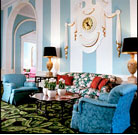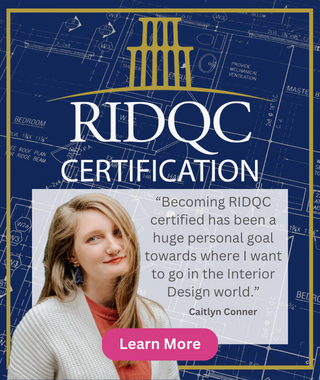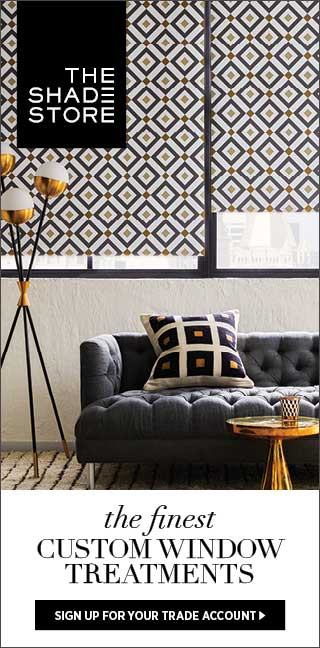Hi - You may or may not know this, but I was allied ASID for 15 plus years. During that time, I was too busy as a working designer to take the time to be grandfathered in as a professional ASID, and was told that it would really not affect my practice. I have decided to share my story with all of you in an effort to help more interior designers better understand the affects of the Practice and Title Acts. I did not realize their true meaning until I too had been fined.Notes from Natasha
The State of Florida, fined me $25,000 - $5,000 each for three counts of claiming to be an architect and two counts of claiming to be an interior designer. The charges were a direct result of a Green Room I designed for the Latin Billboard awards project. An article was written about the project, referring to me as an "award-winning interior designer" and stating that I used crown moldings to embellish interiors. The state interpreted that to mean that I considered myself an architect.
It took us two years and $10,000 to fight and prove that this was unwarranted and that I didn't even have anything to do with the writing of that article. Interior Design Protection Council (IDPC) and Institute for Justice (IJ),helped to reverse the Title Act in the state of Florida at the beginning of this year. Please do not think that the fight is over. States across the country continue to attempt to pass such laws, acknowledging that enforcing the Title and Practice Acts is nothing short of a "witch hunt."
Even though I proved everything was not true and that I was fully in compliance, I still had to pay the state $2,500 for their time. States hire outside legal firms that aggressively interpret the law, fining and disciplining members of the design community that are just trying to earn a living and have not done harm to the public in any way. In a two year period, over 600 Florida interior designers were dragged through the same process.
Please take the time to view this video. (The network named it "Pillow Fight." I am not in favor of the title, but this video has helped to explain our plight and is being used across the country to help prevent the Practice and Title Acts from being passed.) Video link
 Natasha Lima Younts
Natasha Lima Younts
FounderDesigner Society of America

 I'm Excited!!!
I'm Excited!!! Dorothy Draper (1889-1969), was America's first female interior designer, and she turned the establishment on its ear with her outlandish use of color, texture and ornate fixtures. This forward-thinking woman was the Grand Dame of using bright, bold color and texture combinations in her decorating of socialite homes, hotels, offices and hospitals.
Dorothy Draper (1889-1969), was America's first female interior designer, and she turned the establishment on its ear with her outlandish use of color, texture and ornate fixtures. This forward-thinking woman was the Grand Dame of using bright, bold color and texture combinations in her decorating of socialite homes, hotels, offices and hospitals. Draper loved to use color in her decorating, departing from the dark color schemes of the usual Victorian-inspired decor. She was one of the first decorators to believe that vivid, beautiful colors helped people feel happier. She favored using such dramatic color combinations as green and red with coral, or black and white with bits of color thrown in for emphasis. It is said that she suggested the Howard Johnson's orange and blue color scheme, which is famous even today.
Draper loved to use color in her decorating, departing from the dark color schemes of the usual Victorian-inspired decor. She was one of the first decorators to believe that vivid, beautiful colors helped people feel happier. She favored using such dramatic color combinations as green and red with coral, or black and white with bits of color thrown in for emphasis. It is said that she suggested the Howard Johnson's orange and blue color scheme, which is famous even today. Even furniture makers and decorators are copying and promoting the "Draper Touch." Thomasville's magazine, "Dream," shows how to achieve a modern-day Draper sitting room. Teaming large-print cabbage rose upholstered furniture, bold paint schemes and over-scaled elements help to capture the unique flare for which Draper was famed.
Even furniture makers and decorators are copying and promoting the "Draper Touch." Thomasville's magazine, "Dream," shows how to achieve a modern-day Draper sitting room. Teaming large-print cabbage rose upholstered furniture, bold paint schemes and over-scaled elements help to capture the unique flare for which Draper was famed. "Environmentally Responsible Design - Green and Sustainable Design for Interior Designers," edited by Dr. Louise Jones, is a comprehensive textbook - yes, a textbook - and I am recommending it. It's not the kind of book you're likely to curl up and read straight through, but the contributions of many authors are gathered together in a cohesive guide to both the history of sustainability and detailed information necessary for interior designers. It's a comprehensive reference resource for students and seasoned professional interior designers.
"Environmentally Responsible Design - Green and Sustainable Design for Interior Designers," edited by Dr. Louise Jones, is a comprehensive textbook - yes, a textbook - and I am recommending it. It's not the kind of book you're likely to curl up and read straight through, but the contributions of many authors are gathered together in a cohesive guide to both the history of sustainability and detailed information necessary for interior designers. It's a comprehensive reference resource for students and seasoned professional interior designers. "Environmentally Responsible Design Green and Sustainable Design for Interior Designers"
"Environmentally Responsible Design Green and Sustainable Design for Interior Designers" Like Great Britain of old, ASID is large, powerful and militant. Both chose to serve as the partner to select businesses and groups useful to accomplishing their purposes. Both dismiss the injustices they create as collateral damage for the "public good," while refusing to acknowledge the destruction of lives they leave in their wake.
Like Great Britain of old, ASID is large, powerful and militant. Both chose to serve as the partner to select businesses and groups useful to accomplishing their purposes. Both dismiss the injustices they create as collateral damage for the "public good," while refusing to acknowledge the destruction of lives they leave in their wake. We are all painfully aware that times are tough right now even for the businesses that have never had a problem before. Interior design services may very well be at the bottom of the priority list for most homeowners right now, and many of us are having to work even harder to keep our existing clients, let alone seek out new ones. With that being said I'm here to tell you that this tough economic period could very well be the best thing that ever happened to you! Ok, now that you think I'm nuts, I have your attention. Read on and prosper.
We are all painfully aware that times are tough right now even for the businesses that have never had a problem before. Interior design services may very well be at the bottom of the priority list for most homeowners right now, and many of us are having to work even harder to keep our existing clients, let alone seek out new ones. With that being said I'm here to tell you that this tough economic period could very well be the best thing that ever happened to you! Ok, now that you think I'm nuts, I have your attention. Read on and prosper. It's probably a good time to take a look at how to run a better business. (But hey, when is it not a good time?) This economy does not leave room for you to succeed in interior design unless you are a relentless warrior. If you are doing things the same way you were even 90 days ago, it is time to do some careful thinking and strategic and creative planning. Take a deep cleansing breath and get ready to reclaim your passion for the wonderful field that we are in.
It's probably a good time to take a look at how to run a better business. (But hey, when is it not a good time?) This economy does not leave room for you to succeed in interior design unless you are a relentless warrior. If you are doing things the same way you were even 90 days ago, it is time to do some careful thinking and strategic and creative planning. Take a deep cleansing breath and get ready to reclaim your passion for the wonderful field that we are in.



